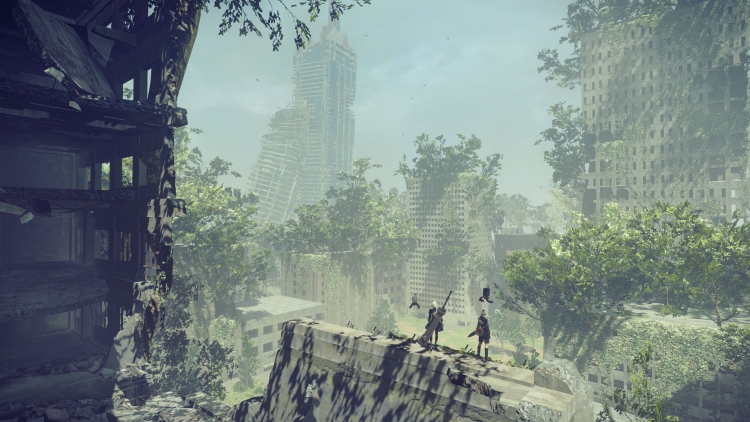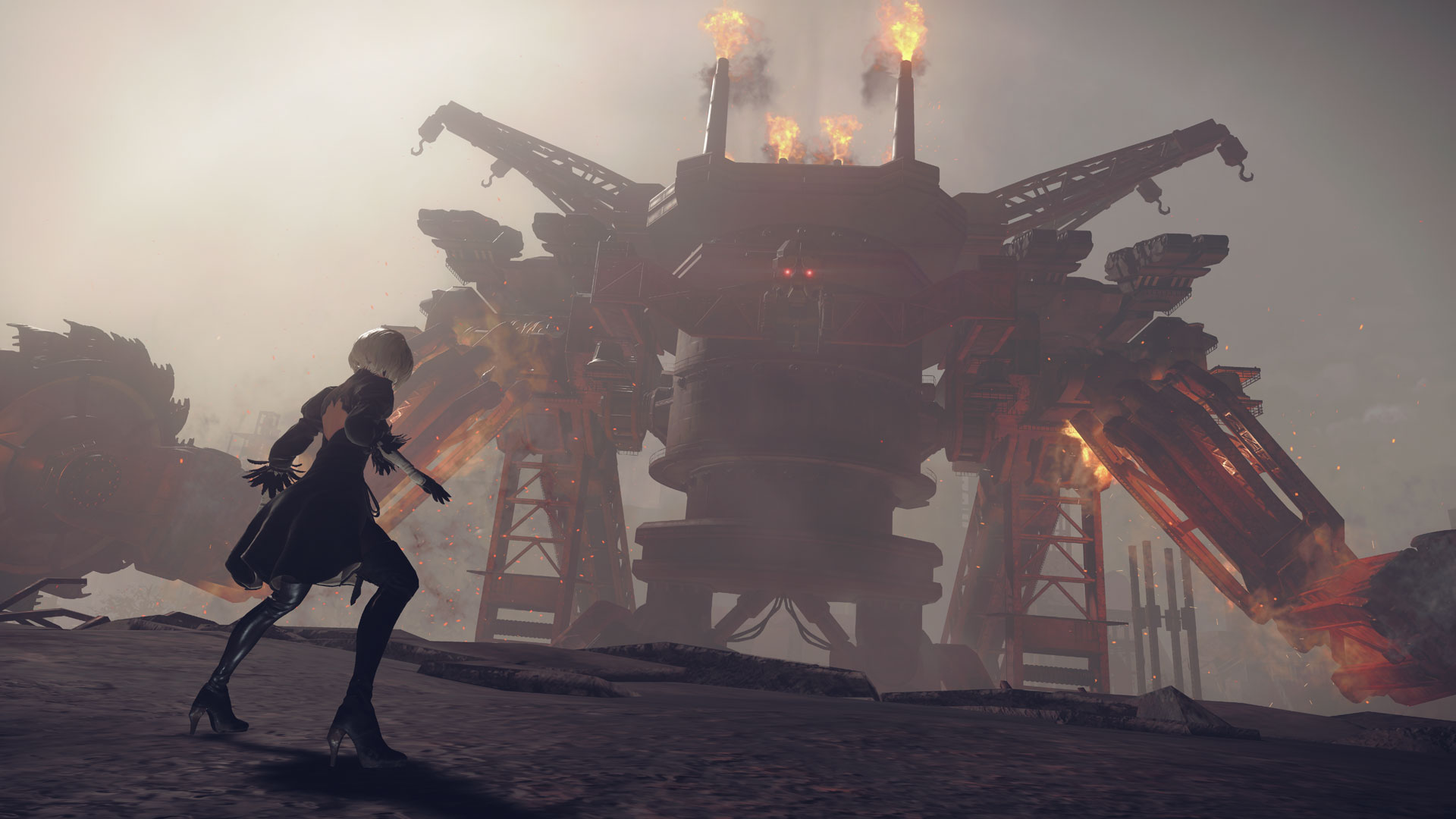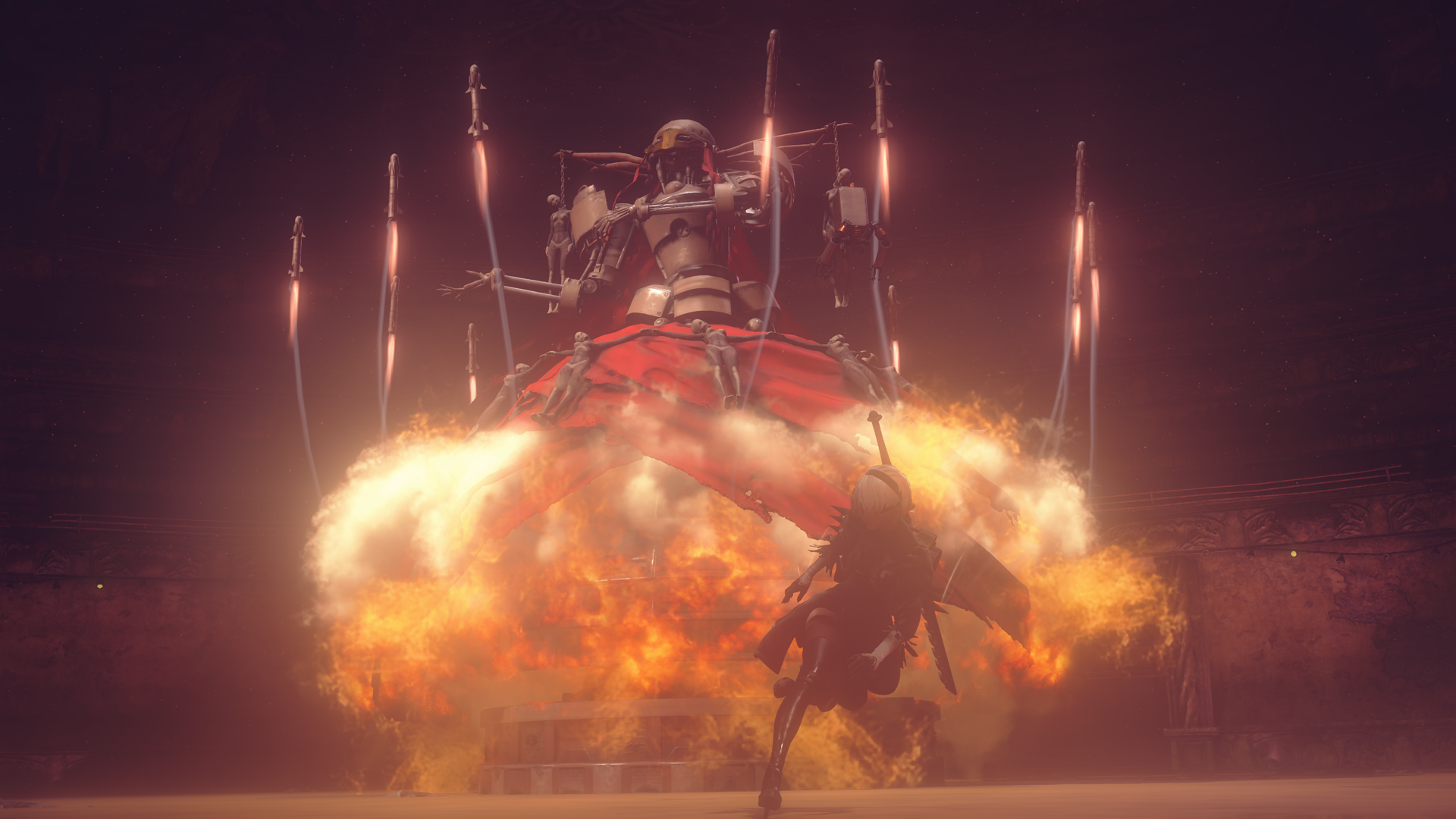Symphony of Story and Gameplay

As an interactive medium, video games over the years have learned that perfect integration between the game's story and its gameplay is practically impossible. It is incredibly difficult to construct a fairly linear narrative and at the same time give players the freedom to act however they want. I — as the character — may be on the run from a dangerous group of enemies, but nothing is stopping me — the player — from hopping down into the bowling alley and getting a few strikes. Balancing between enjoyable gameplay, the freedom of the player and a more cohesive and realistic narrative is a real dilemma in the world of video game design.
Some games choose to nearly entirely segregate the two from each other. For example, many games belonging to the First Person Shooter (FPS) genre — such as the Call of Duty franchise — rarely attempt to try and explain why it is that after your character dies they are revived after a few seconds. It is a convenience created for the enjoyment of the players so they may return to their game pretty much immediately, but from the perspective of the story, it makes no sense.
Modern games do tend to have better gameplay and story integration. Whether by gating off some of the player's freedom during a more tense moment in the narrative or by giving more explanations in-game for some of the gameplay mechanics; there is a clear attempt to create an experience that is not only fun to play, but also presents an interesting narrative.
NieR: Automata — An Introduction
Image Credit: Steam/Square Enix
In late February/early March 2017, a game by the name of NieR Automata came out; it received high critical praise, sold more than 1.5 million copies and even led to one of the co-founder's of Platinum Games (the developers) to say that Yoko Taro (the director) pretty much saved their company. The game is a sequel to 2010's NieR, which is a spin-off to 2003's Drakengard, both of which were also directed and written by Yoko Taro. The main story is not directly connected to the previous games, which makes enjoying the game easier without having any experience with the franchise. As Caty McCarthy from USgamer put it:
"We don't get games like Nier: Automata too often. And by that, I mean games that simultaneously weave a deeply harrowing existentialist narrative, in addition to playing with our expectations on how we play games. There's nothing else around like Nier: Automata (except for maybe its predecessor). And in an industry that sometimes leans too heavily on sameness, it's wholly refreshing."
Set around 11,945 AD, the story focuses on two androids — 2B and 9S — who are part of an ongoing, millennia long war with machine lifeforms who were created by aliens in an attempt to wipe out mankind. The androids are charged with destroying all of the machines and protecting a bunker on the moon that houses the last remnants of humanity. If this premise sounds a bit outlandish to you, it is perfectly fine — the director himself defines his games as "weird games for weird people".
One of the best aspects of the game is that it tells a type of story that can only be told via the medium of video games. As with its predecessor, the game requires you to play through it multiple times in order to get its true ending. Throughout the game's "route A" you control 2B, in "route B" you control 9S through the same scenario as "route A" and in "route C" you play the events that take place after both of the previous routes. Slowly the player and the characters learn more about the war and how truly pointless it is.
Interweaving Themes
Themes of existentialism, society, and prejudice are interwoven into the game's narrative and the characters — leading to a much more complex narrative where, by the end, it is not quite clear who the villains and who the heroes are exactly. In order to give weight to its narrative, the game goes out of its way to not only integrate the story into its gameplay but also its themes.
Thematic dissonance happens when the story and the gameplay send contradictory messages to the player.NeiR Automata, on the other hand, manages to have its themes be a part of its gameplay. For example, the theme of changing perspectives happens all the time throughout the game; sometimes players will not have control of their camera and be forced accordingly to change how they play. 9S has the ability to hack into machines at which point the player takes control of a small, abstract "spaceship" and is tasked with destroying a "core". The perspective changes (which also include changing the controllable character for "route B") strengthen the theme that both the player and the characters must change their perspective on the war in order to truly understand it.
Another theme that is presented through the gameplay is that there is not much difference between the androids and the machines. Machines have the chance to drop electronic chips that the androids are able to equip as a way to upgrade themselves — the question is how come androids are able to equip electronic chips from alien machine lifeforms. Another aspect that adds to this, is that in order to upgrade some of the weapons in the game, it is necessary to acquire machine parts — further blurring the lines separating the two.
Image Credit: Steam/Square Enix
NieR Automata is a fantastic game with incredible amounts of depth to it (especially moments in "route C") that you will have to find out for yourself. Everything from the art, to the soundtrack and of course the story, is top notch. What the game, and its predecessor, signify is that video games as a medium have unique stories to tell, that only it can tell. The fact that many game developers choose to tell stories that do not take advantage of the medium and how interactive it is, is a bit disheartening. At least this game shows a step in the right direction, and hopefully, young video game designers learn from it just how powerful this medium can truly be.









